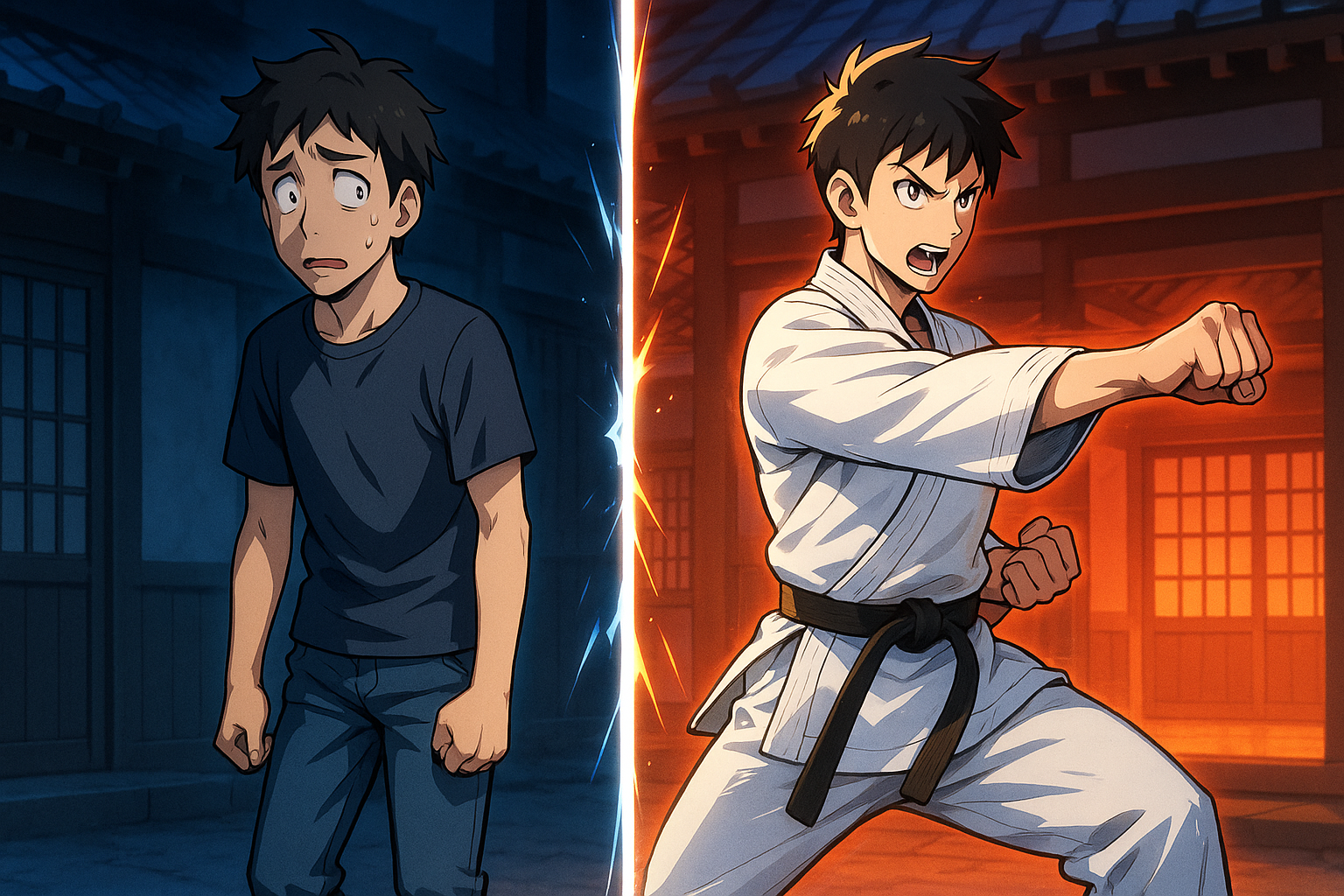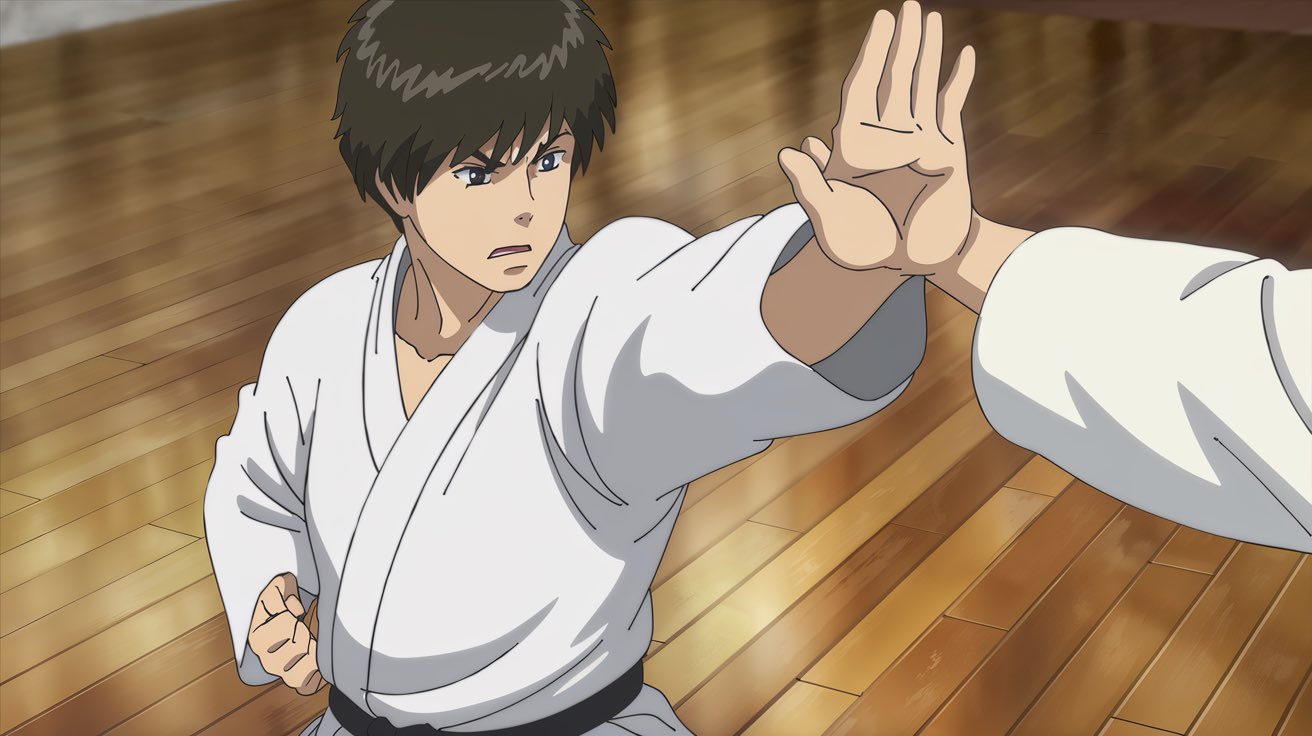30-Day Shotokan Karate Flexibility Challenge: Transform Your Kicks, Power, and Flow – Fast!
Key Points on Stretching For Shotokan Karate
- Discover how a 30-day flexibility plan can level up your Shotokan Karate.
- Simple, proven exercises tailored for karateka – no wasted moves.
- Reduce injury risk and improve kicking height without losing stability.
- Perfect for beginners and experienced black belts.
- Backed by martial arts physiology and sports science.
Why Your Kihon Progress Has Stalled – And How to Break Through
Every karateka remembers their first mawashi-geri that felt right. That perfect arc, the snap at impact, the balance after landing. But for many, there’s a silent barrier holding them back: tight hips, rigid hamstrings, and limited joint mobility.
In Shotokan, where precision and control matter just as much as power, lack of flexibility isn’t just inconvenient – it’s a silent performance killer.
And here’s the truth: your kicks, stances, and kumite flow will never reach their peak unless you address it. That’s where the 30-Day Shotokan Flexibility Challenge comes in.
Why 30 Days is the Sweet Spot for Real Results
Science says habit formation takes around 21–30 days. In martial arts, this timeframe is long enough to notice a genuine performance change – without being so long that you lose motivation.
By committing to 30 days, you create a consistent training rhythm that turns flexibility into a skill, not a chore.
The Exact Plan to Unlock Your Flexibility in Just One Month
Here’s the core structure:
Daily Dynamic Warm-Up – 5–7 mins
- Leg swings (front & side)
- Hip circles
- Walking lunges with rotation
Targeted Mobility Work – 10 mins
- Deep squat holds (hips & ankles)
- Hip flexor stretches
- Seiza and knee glide stretches
Karate-Specific Stretching – 10–15 mins
- Front splits progression (for mae-geri reach)
- Side splits progression (for yoko-geri and mawashi-geri height)
- Spine rotation mobility (for better body alignment in techniques)
Cool Down & Breathwork – 5 mins
- Gentle forward folds
- Cat-cow stretches
- Box breathing to improve recovery
Stick with this, and by Day 30 you’ll notice:
- Higher kicking range without losing stability.
- Faster recovery between training sessions.
- A noticeable difference in fluidity of movement.
How to Push Through the Motivation Dips
Let’s be honest – some days you’ll want to skip. Maybe your legs ache, or life gets in the way. But this is where the “challenge” part earns its name.
Pro tip: Instead of aiming for perfection, aim for consistency. Missing one day won’t destroy your progress – but breaking the chain for a week will.
What Happens to Your Karate After 30 Days
By the end of 30 days, your body won’t just be more flexible – it will be better adapted for Shotokan.
- Stances will feel lighter. Deep zenkutsu-dachi won’t burn your thighs in seconds.
- Kicks will be smoother and faster. Your hips will open naturally without forcing the motion.
- Injury risk will drop. Flexible muscles and tendons handle impact and dynamic movement better.
According to a 2018 Journal of Strength and Conditioning Research study, martial artists with dedicated flexibility training had 38% fewer lower limb injuries compared to those who skipped it.
Your Biggest Flexibility Questions – Answered
Will I lose power if I become “too flexible”?Not if you train smart. Flexibility combined with strength improves kicking power. Think rubber band – more stretch equals more snap.
How long before I see results?Some feel looser after a week, but real transformation comes between Days 20–30.
Do I need to train on rest days?Yes, but keep it gentle. Flexibility thrives on frequency, not just intensity.
I’m over 40 – is this still safe?Absolutely. In fact, older karateka benefit most from increased mobility, as it offsets age-related stiffness.
Can this help my kata performance?Yes – flexibility improves stance depth, transitions, and overall kata fluidity.
Why This Challenge Will Stretch You Change Your Karate-Do Forever
Here’s the real win: after 30 days, flexibility won’t feel like an extra – it’ll be part of your karate DNA. You’ll stand taller, kick higher, and move with a confidence that wasn’t there before.
The 30-Day Shotokan Flexibility Challenge isn’t about touching your toes – it’s about unlocking full-body freedom so your karate flows without limits.
The journey is yours. Start today, and in 30 days, you’ll wonder why you didn’t begin sooner
Additional Questions
What is Shotokan flexibility training?
Shotokan flexibility training focuses on improving the suppleness and range of motion of karateka through various stretching exercises. This training is essential for enhancing performance in karate techniques, such as high kicks and dynamic movements. It typically includes both static and dynamic stretches tailored to the needs of Shotokan karate practitioners.
How can warm up and stretch routines benefit Shotokan karate practice?
Incorporating warm up and stretch routines before training sessions helps prepare the body for physical activity, reducing the risk of injury. These routines enhance muscle flexibility and promote better posture and stance, which are crucial for executing techniques effectively in Shotokan karate.
What role does a sensei play in Shotokan flexibility training?
A sensei is vital in guiding karateka through proper flexibility training techniques. They provide instruction on safe stretching methods, help students understand their body limits, and ensure that the exercises align with the level of training. This mentorship is essential for fostering a safe and effective training environment.
What types of stretching exercises are recommended for Shotokan karate?
Recommended stretching exercises for Shotokan karate include static stretches for muscle groups such as hamstrings and quadriceps, dynamic stretching exercises like leg swings, and ballistic stretches that involve quick movements. These exercises enhance muscle fibers’ elasticity and overall performance in karate techniques.
How can practicing at home improve flexibility in Shotokan karate?
Practicing at home allows karateka to integrate flexibility training into their routine consistently. By dedicating time to warm-up and stretching exercises, individuals can improve their muscle flexibility and range of motion, which are crucial for executing techniques effectively in Shotokan karate.
What are the best dynamic stretching exercises for Shotokan karate?
Some of the best dynamic stretching exercises for Shotokan karate include high kicks, arm circles, and torso twists. These movements help warm up the body, increase blood flow, and prepare the muscles and joints for the demands of karate training, ultimately enhancing performance and reducing the risk of injury.
Why is flexibility training important for high kicks in Shotokan karate?
Flexibility training is crucial for executing high kicks in Shotokan karate, as it allows practitioners to achieve greater height and control. Improved muscle and joint suppleness lead to enhanced technique execution, making flexibility training an essential component of any karateka’s training regimen.
How does JKA contribute to Shotokan karate flexibility training?
The Japan Karate Association (JKA) emphasizes the importance of flexibility in karate training. They provide structured programs and resources that include recommended stretching routines and techniques to improve muscle flexibility, posture, and overall performance in Shotokan karate.
What is the significance of a cool-down after Shotokan flexibility training?
A cool-down is significant after Shotokan flexibility training as it helps the body transition back to a resting state. It allows the muscles to relax, reduces soreness, and aids in recovery. Incorporating gentle static stretches during the cool-down can further enhance flexibility and prevent stiffness.





Leave a Reply